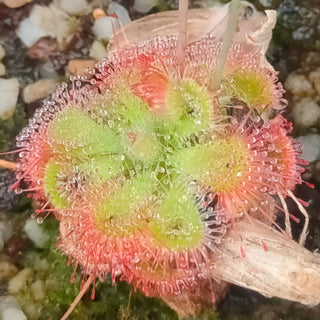Cimicifuga racemosa, Actaea racemosa
BLACK COHOSH, SNAKEROOT, BUGBANE
- Unit price
- / per
Known as black cohosh, black bugbane, black snakeroot, rattle-top, or fairy candle, the plant is native to North America including Canada and the USA. It grows in a variety of woodland habitats, and is often found in small woodland openings.
In late spring and early summer it bears tall tapering racemes of white midsummer flowers on wiry black-purple stems. The drying seed heads stay handsome in the garden for many weeks. Its deeply cut, superficially maple-like leaves add interest to gardens, which make it a popular garden perennial. It has gained the Royal Horticultural Society's Award of Garden Merit.
The plant was Virginia Native Plant Society’s 2017 wildflower of the year.
Type: Hardy perennial
Hardiness zones: 3-7
Height: 59", 150cm
Location: Shade or part sun
Seeds per packet: 20
Sow just under the surface of the soil and water in. First keep them at room temperature for 6 weeks. This helps break the phytohormones which inhibit germination. Then cover them with plastic to retain moisture, and then place in a fridge for 8 weeks. Then bring them to a cool room (approximately 12°C, 54°F) for 8 weeks for germination. They may be growing at this point, though often they need a second cold period. If they are not growing cover them with plastic and place in a fridge for another 6-8 weeks. Be sure they stay moist. After the second cold stratification period they are then brought back to a cool (12-15°C, 54-59°F) room for them to germinate. This double cold period is not always needed, but sometimes necessary, and is very normal for these seeds. Germination is in 30-90 days after the second warming period.
Ornamental use only. These seeds and/or plants are poisonous.
Cimicifuga racemosa, Actaea racemosa
BLACK COHOSH, SNAKEROOT, BUGBANE
- Unit price
- / per
Multiple secure payment options available.
Adding product to your cart
You may also like
Known as black cohosh, black bugbane, black snakeroot, rattle-top, or fairy candle, the plant is native to North America including Canada and the USA. It grows in a variety of woodland habitats, and is often found in small woodland openings.
In late spring and early summer it bears tall tapering racemes of white midsummer flowers on wiry black-purple stems. The drying seed heads stay handsome in the garden for many weeks. Its deeply cut, superficially maple-like leaves add interest to gardens, which make it a popular garden perennial. It has gained the Royal Horticultural Society's Award of Garden Merit.
The plant was Virginia Native Plant Society’s 2017 wildflower of the year.
Type: Hardy perennial
Hardiness zones: 3-7
Height: 59", 150cm
Location: Shade or part sun
Seeds per packet: 20
Sow just under the surface of the soil and water in. First keep them at room temperature for 6 weeks. This helps break the phytohormones which inhibit germination. Then cover them with plastic to retain moisture, and then place in a fridge for 8 weeks. Then bring them to a cool room (approximately 12°C, 54°F) for 8 weeks for germination. They may be growing at this point, though often they need a second cold period. If they are not growing cover them with plastic and place in a fridge for another 6-8 weeks. Be sure they stay moist. After the second cold stratification period they are then brought back to a cool (12-15°C, 54-59°F) room for them to germinate. This double cold period is not always needed, but sometimes necessary, and is very normal for these seeds. Germination is in 30-90 days after the second warming period.
Ornamental use only. These seeds and/or plants are poisonous.

















































